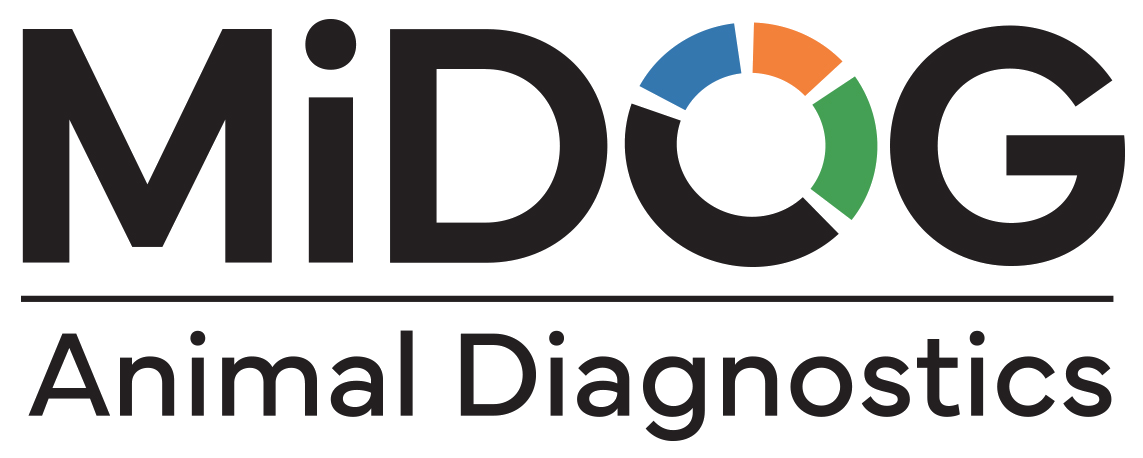Respiratory diseases in pet rabbits are a significant concern for veterinarians, with bacterial infections often being the primary culprits. Historically, Mycoplasma taxa are among the most insidious pathogens implicated in respiratory diseases in rabbits. Mycoplasma bacterial species are notorious for evading immune responses due to their lack of a cell wall, making it resistant to many commonly used antibiotics, including beta-lactams. Moreover, Mycoplasma species can form biofilms, enabling them to persist in the host and evade immune defenses, potentially leading to chronic infections. BUT- there has been a gap in understanding of the fact that Mycoplasma is also prevalent in rabbits without respiratory illness. A recent study by Dr. Juliane McCreedy DVM, DVSc, DACZM and the MiDOG team sheds new light on this conundrum using MiDOG’s innovative Next-Generation Sequencing (NGS) technology.
Historically, the presence of Mycoplasma in rabbits was mainly detected through culture methods or polymerase chain reaction (PCR) techniques, both of which have limitations. Culture methods are time-consuming and may fail to grow certain strains, while PCR requires prior knowledge of the specific species being targeted. Our new publication, “Detection of Mycoplasma sp. using next-generation DNA sequencing is common on nasal swabs from both healthy and unhealthy pet rabbits (Oryctolagus cuniculus)” employed advanced Next-generation sequencing (NGS) techniques to detect Mycoplasma species in the nasal passages of pet rabbits, clarifying the implications of Mycoplasma in rabbit respiratory infections!
The Study: An Overview
We aimed to explore the prevalence of Mycoplasma species in the nasal swabs of both healthy and unhealthy pet rabbits. To achieve this, we utilized NGS, which allows for the detection of a broader range of Mycoplasma species, including those not easily cultured or identified using traditional methods, like PCR. This technology enables the identification of bacterial DNA directly from samples, offering a clearer picture of the microbiome present in the nasal passages of rabbits. Our goal was to determine whether Mycoplasma that is commonly present in the nasal passages was present in either healthy rabbits or those rabbits with respiratory illness, and whether its presence correlated with signs of respiratory disease.
Key Findings: Mycoplasma species were detected in BOTH healthy and unhealthy rabbits- challenging the traditional view that Mycoplasma is primarily associated with disease.
While previous studies often found that Mycoplasma is present in rabbits exhibiting respiratory symptoms, our findings indicate that Mycoplasma can also be present in the normal nasal flora in healthy rabbits. This raises important points about its role in disease that cannot be overlooked:
- It is possible that certain species of Mycoplasma may be commensal in rabbits, that then have the potential to become pathogenic under certain conditions. Factors such as stress, co-infections with other respiratory pathogens, or immune suppression could trigger the shift from a commensal to a pathogenic relationship, leading to respiratory illness.
- There may be Mycoplasma that are commensal in the rabbit respiratory microbiome. Another noteworthy finding from the study is the diversity of different types of Mycoplasma species that were detected. Rather than being limited to a single species, a variety of Mycoplasma species were identified, further complicating our understanding of their role in rabbit health. This diversity suggests that different species of Mycoplasma may have varying levels of pathogenicity, with some potentially being more virulent than others.
For veterinarians, the results of this study have several important implications.
- The detection of Mycoplasma species in healthy rabbits suggests that the mere presence of these bacteria may not be sufficient to warrant treatment. Rather, clinical decisions should be based on a combination of factors, including the presence of respiratory symptoms, the rabbit’s overall health, and the involvement of other pathogens. This is particularly important given the challenges of treating Mycoplasma infections due to their resistance to certain antibiotics.
- The study also highlights the importance of using advanced diagnostic tools, including MiDGOG’s NGS techniques, in the diagnosis of respiratory infections in rabbits. Traditional culture methods and PCR may miss certain Mycoplasma species, leading to incomplete or inaccurate diagnoses. By utilizing NGS, veterinarians can obtain a more comprehensive understanding of the bacterial flora present in the respiratory tract, allowing for more targeted and effective treatment strategies.
- While the study demonstrates that Mycoplasma is common in both healthy and unhealthy rabbits, more research is needed to understand the conditions under which these bacteria become pathogenic. This could involve studying the interactions between Mycoplasma and other respiratory pathogens, as well as investigating the impact of environmental factors, such as stress and diet, on the development of respiratory disease.
Challenges and Future Directions
While our study provides valuable insights into the prevalence of Mycoplasma in pet rabbits, it also raises several questions that warrant further investigation:
- What specific role does Mycoplasma play in the development of respiratory disease?
- Are certain species of Mycoplasma more likely to cause illness than others?
- What are the most effective treatment strategies for rabbits with Mycoplasma infections?
Addressing these questions will require additional studies that combine NGS with clinical assessments of rabbit respiratory health. Longitudinal studies that track the health of rabbits over time could help to clarify the relationship between Mycoplasma and respiratory disease, while experimental studies could evaluate the efficacy of different treatment approaches.
Still, our findings mark a significant step forward in our understanding of Mycoplasma in pet rabbits! For veterinarians, these findings underscore the importance of a nuanced approach to diagnosing and treating respiratory infections in rabbits. While the presence of Mycoplasma may not always indicate disease, its potential to contribute to respiratory illness, particularly in combination with other factors, should be considered. Fortunately, NGS offers new opportunities to improve the diagnosis and management of respiratory diseases in rabbits, ultimately leading to better outcomes for our furry friends!
______________________________________________________________________________________________________________________________________
References: Click below to access the article
McCreedy, J., et al. (2023). Detection of Mycoplasma sp. using next-generation DNA sequencing is common on nasal swabs from both healthy and unhealthy pet rabbits (Oryctolagus cuniculus).
______________________________________________________________________________________________________________________________________
